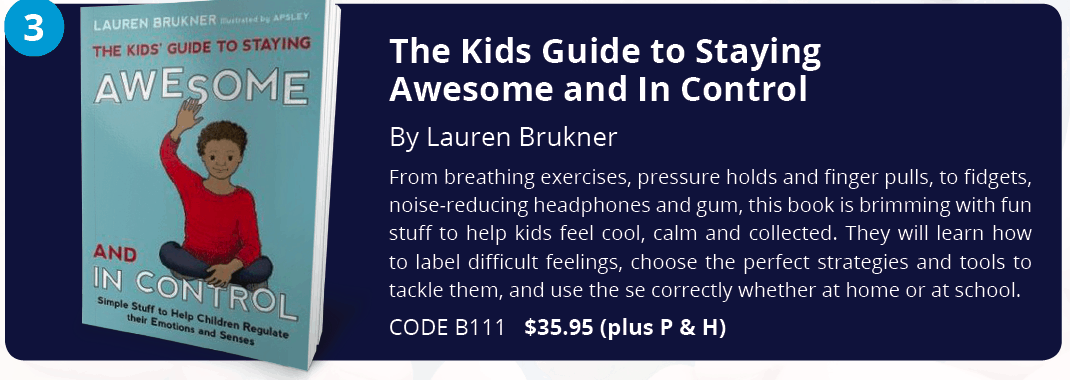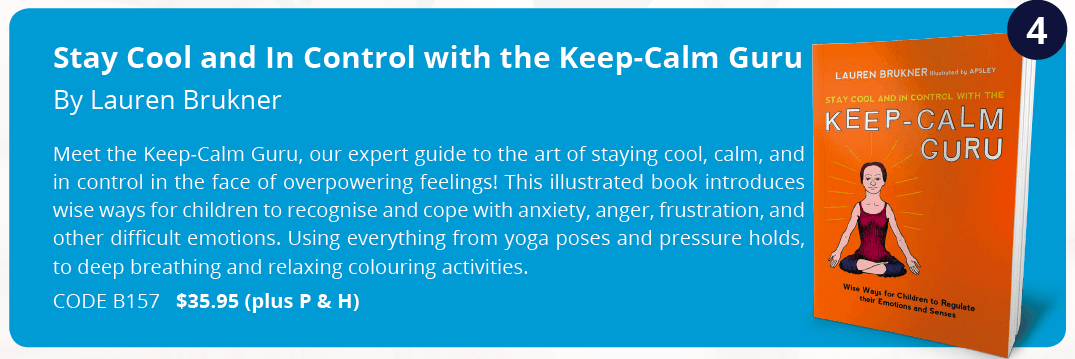The emotional world for people on the spectrum can be very scary! Emotions often come without warning and are difficult to label and connect to a cause, which leaves the person unable to control them. “You cannot control what you cannot define, label, and understand.” ( Excerpt from The Autism Discussion Page, pg 285), therefore it is very important we give the child skills and strategies to understand and regulate their emotions.
Dean Beadle, an adult with ASD, discusses how he was given behaviour cards for bad behaviour. Every term he would receive more and more cards as he didn’t know what he was meant to do. Teaching children about emotions and strategies to regulate emotions makes a huge difference to behaviour. Dean Beadle explains how when he saw himself as part of the solution rather than the problem, that he then knew what he was meant to do. Teaching children to identify their emotions empowers them to identify why the problem is occurring and what strategies they can put in place to address the problem.

Lauren Brukner has written a great series of books to help children regulate their emotions and senses. Children will learn how to label difficult feelings, choose the perfect strategies and tools to tackle them and use these correctly whether at home or at school. The strategies are accompanied by cartoon-style illustrations, and the author includes useful tips for parents and teachers plus handy visual charts and checklists to track learning and progress. (See p9 of The Kids’ Guide to Staying Awesome and In Control for some great practical strategies.)
“The Kid’s Guide to Staying Awesome and In control is crucial in helping children pinpoint how they feel so they can implement which methods work best for them to maximise their learning potential and provide everyday comfort” – Autism Parenting Magazine
In Lauren Brukner’s series children can create their own Self-Regulation Menu – with a selection of body breaks or tools to use (pg 96-100 of The Kids’ Guide to Staying Awesome and In Control ). For some students these would be ideal as Dean Beadle said “so you feel part of the solution not the problem!” Teaching emotional regulation allows kids to be proactive not reactive!
IDEAS TO HELP CHILDREN SELF REGULATE THEIR EMOTIONS AND SENSES
ITEMS THAT PROVIDE PROPRIOCEPTIVE SUPPORT
- Weighted lap cushion or weighted
- Stuffed animal
- Mini bean chair
- Stretchy resistance bands
- Mini massager
- Body Sock
- Small Blanket
- Sensory mat
ITEMS TO SQUEEZE & KEEP HANDS BUSY
- Fidgets like Punki wrist bands
- Rubik’s Cube
- Play dough or silly putty
- Sensory stixx
- Stress balls/Smiley Face ball
- Bubble Wrap
- Figipod
- Bag of tissue paper to rip
- Scarves or fabric scraps
- Spinning top
ITEMS TO SUPPORT BREATHING AND RELAXATION
- Bottle of bubbles
- Pinwheels
- Water bottles for a drink break
ITEMS FOR OLFACTORY SUPPORT
- Calming essential oil spray
- Smelling bottles
- Scratch and sniff stickers
ITEMS TO GET KIDS MOVING
- Book of yoga poses or activity cards
- Skipping rope
ITEMS FOR AUDITORY SUPPORT
- Noise cancelling headphones
- Music
- Audiobooks
- Timers
ITEMS FOR ORAL MOTOR SENSORY SUPPORT
- Chewable jewellery
- Chewing gum or lollipops
- Snacks with a variety of textures
- Emotichew
- Whistle, harmonica, party blowers, or similar
- Chewy Tubes
ITEMS THAT GIVE KIDS A BRAIN BREAK
- Puzzle
- Books to read
- Blank notebook and writing utensils
- Colou ring books
- Scratch art doodle pad
- Activity Books
- Toilet or Drink Break
ITEMS TO VISUALLY CALM
- Light up toys
- Flashlight
- Plastic snow globe
- Liquid Timers
- Kaleidoscope
- Spinning tops
- Eye mask
NOTE
The bolded items are available at www.suelarkey.com.au






 Sorry we no longer ship items outside Australia. Please consider the digital versions of Sue’s Books –
Sorry we no longer ship items outside Australia. Please consider the digital versions of Sue’s Books – 